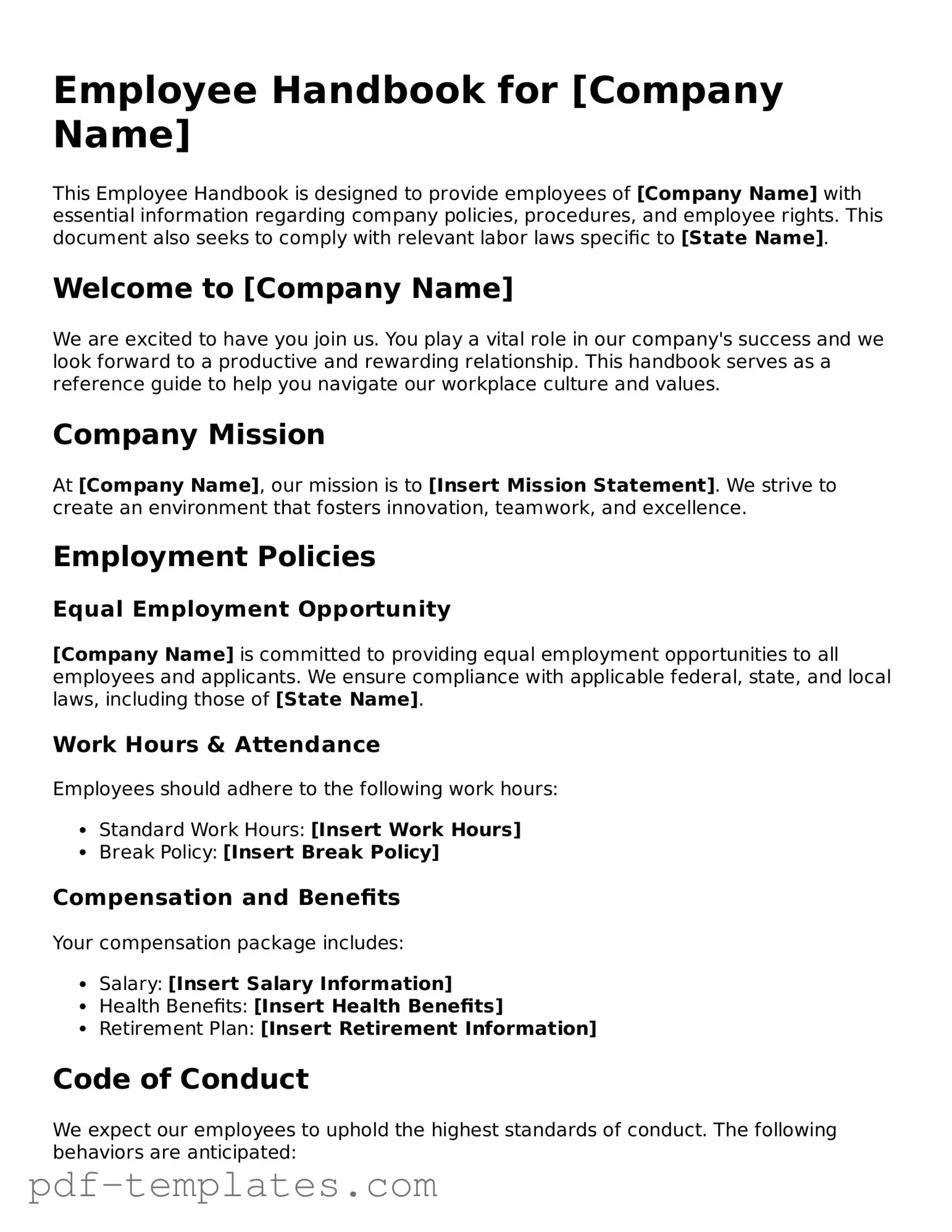Employee Handbook Document
An Employee Handbook is a comprehensive document that outlines company policies, procedures, and employee expectations. It serves as a vital resource for both employers and employees, promoting a clear understanding of workplace standards. For those looking to establish or update their handbook, consider filling out the form by clicking the button below.
Customize Form Now
